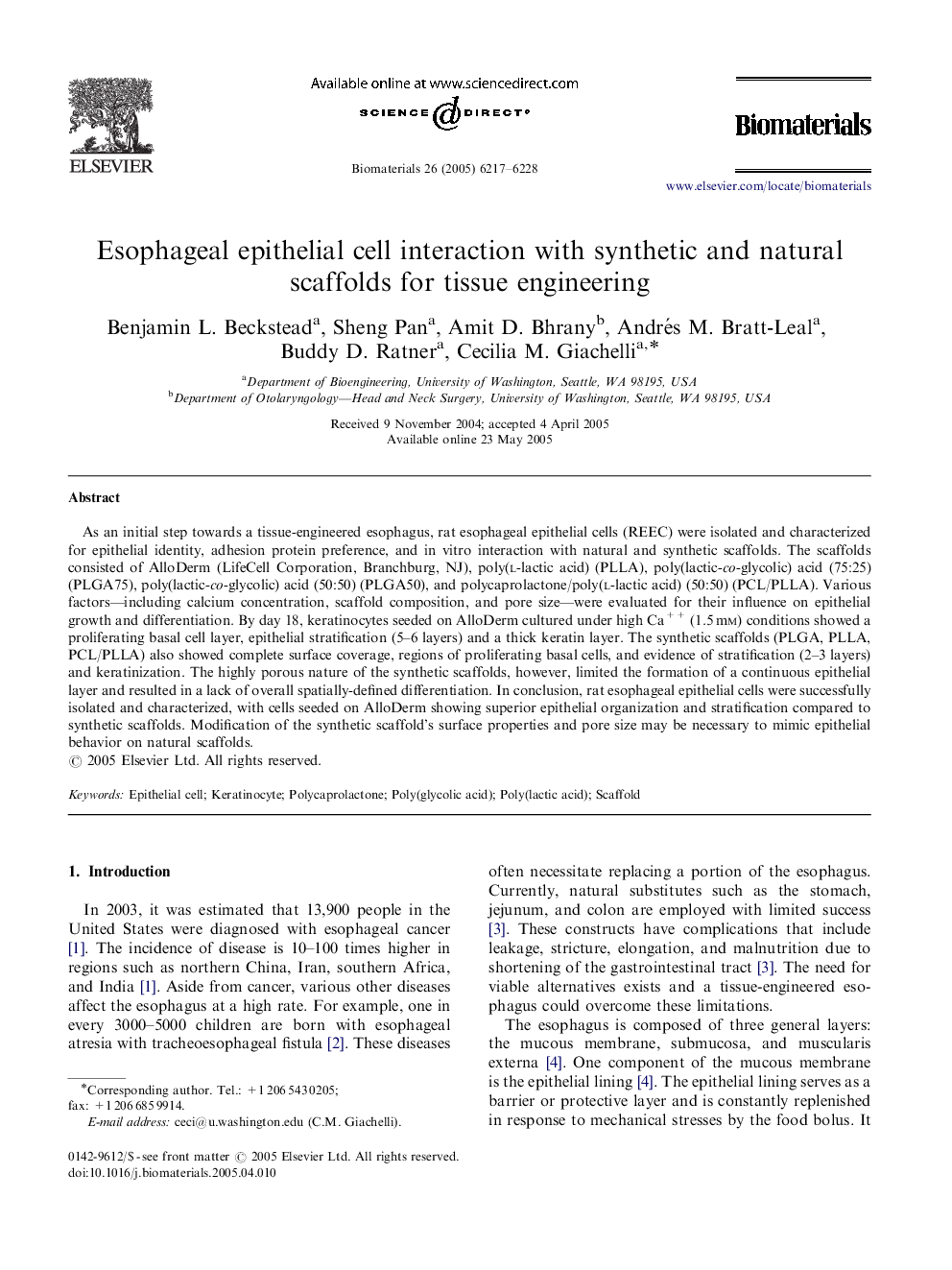| کد مقاله | کد نشریه | سال انتشار | مقاله انگلیسی | نسخه تمام متن |
|---|---|---|---|---|
| 11938 | 767 | 2005 | 12 صفحه PDF | دانلود رایگان |

As an initial step towards a tissue-engineered esophagus, rat esophageal epithelial cells (REEC) were isolated and characterized for epithelial identity, adhesion protein preference, and in vitro interaction with natural and synthetic scaffolds. The scaffolds consisted of AlloDerm (LifeCell Corporation, Branchburg, NJ), poly(l-lactic acid) (PLLA), poly(lactic-co-glycolic) acid (75:25) (PLGA75), poly(lactic-co-glycolic) acid (50:50) (PLGA50), and polycaprolactone/poly(l-lactic acid) (50:50) (PCL/PLLA). Various factors—including calcium concentration, scaffold composition, and pore size—were evaluated for their influence on epithelial growth and differentiation. By day 18, keratinocytes seeded on AlloDerm cultured under high Ca++ (1.5 mm) conditions showed a proliferating basal cell layer, epithelial stratification (5–6 layers) and a thick keratin layer. The synthetic scaffolds (PLGA, PLLA, PCL/PLLA) also showed complete surface coverage, regions of proliferating basal cells, and evidence of stratification (2–3 layers) and keratinization. The highly porous nature of the synthetic scaffolds, however, limited the formation of a continuous epithelial layer and resulted in a lack of overall spatially-defined differentiation. In conclusion, rat esophageal epithelial cells were successfully isolated and characterized, with cells seeded on AlloDerm showing superior epithelial organization and stratification compared to synthetic scaffolds. Modification of the synthetic scaffold's surface properties and pore size may be necessary to mimic epithelial behavior on natural scaffolds.
Journal: Biomaterials - Volume 26, Issue 31, November 2005, Pages 6217–6228